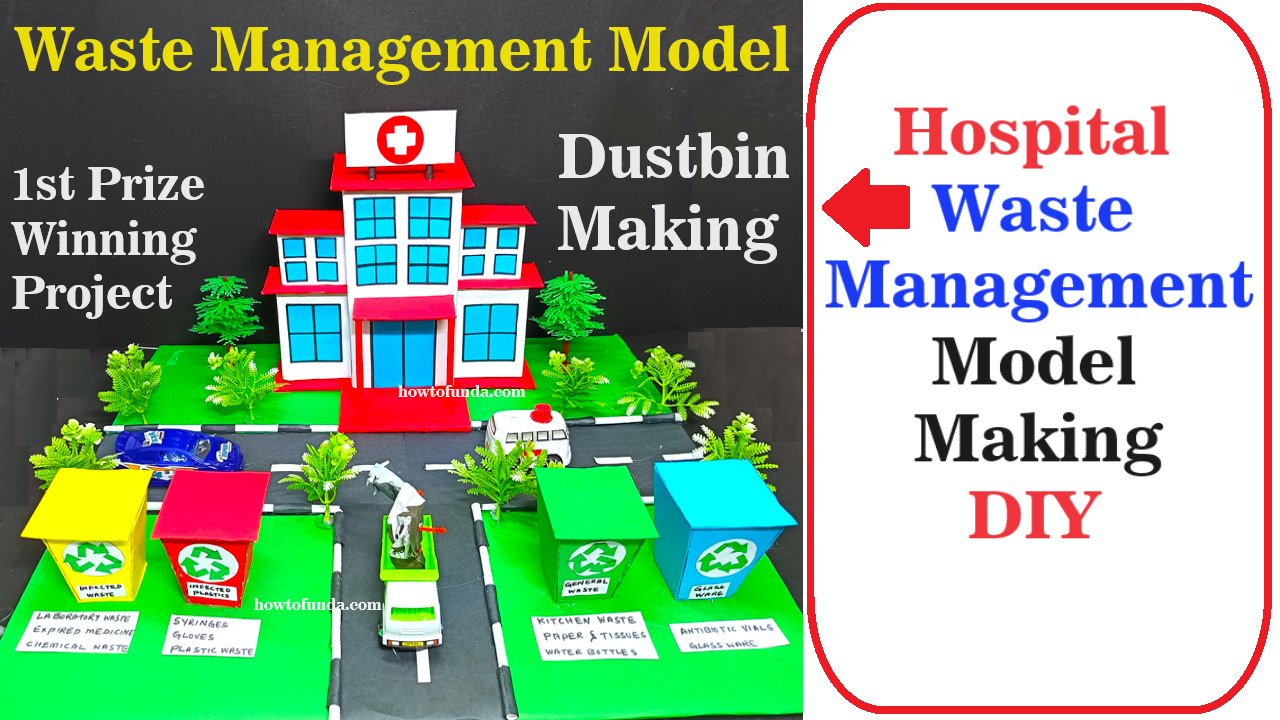Creating a biomedical waste management model with four dustbins using cardboard and color paper is a great way to demonstrate the importance of proper waste disposal in hospitals.

Here’s how you can make it:
Materials Needed:
- Cardboard
- Color paper (yellow, red, blue, black)
- Scissors
- Glue
- Marker
- Disposable gloves (optional, for handling)
Types of Biomedical Waste and Dustbins:
- General Biomedical Waste (Yellow)
- Infectious Waste (Red)
- Sharp Waste (Blue)
- Pharmaceutical Waste (Black)
Step by Step Video Instructions:
- Prepare the Base:
- Cut out a large rectangular piece of cardboard to serve as the base of your model.
- Cover the cardboard with white color paper or leave it as it is.
- Create the Dustbins:
- Cut out four large rectangular pieces of cardboard to create the main body of each dustbin.
- Cover each cardboard piece with color paper of the respective colors:
- Yellow for general biomedical waste
- Red for infectious waste
- Blue for sharp waste
- Black for pharmaceutical waste
- Write the name of each type of waste on the front of the corresponding dustbin using a marker.
- Designate Areas for Dustbins:
- Arrange the four dustbins side by side on the base, leaving some space between each.
- Use markers to draw a line or boundary around each dustbin to separate them visually.
- Labeling:
- Write clear labels above each dustbin to indicate the type of waste it’s meant for.
- For example:
- “General Biomedical Waste”
- “Infectious Waste”
- “Sharp Waste”
- “Pharmaceutical Waste”
- Decorate and Add Details:
- Optionally, you can add symbols or images representing the types of waste each bin is meant for. For example, a picture of a syringe for sharp waste, a biohazard symbol for infectious waste, etc.
- Use markers to draw biohazard symbols on the infectious waste bin and any other relevant symbols on the appropriate bins.
- Display:
- Once you’ve completed your model, display it in a prominent location such as the classroom, school hallway, or during a science fair.
- Consider adding informational posters or charts nearby explaining the different types of biomedical waste and why proper disposal is crucial.
This model effectively demonstrates how hospitals manage different types of biomedical waste and the importance of segregating waste properly to prevent contamination and ensure the safety of healthcare workers and the public.
It’s an informative and visually appealing project for educational purposes.

